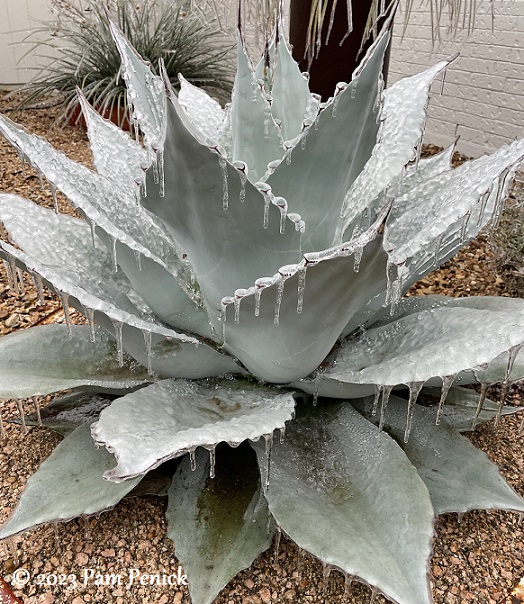
Most people’s gardens get shadier over time. Mine is growing sunnier. Extreme weather events over the past 15 years — droughts, hotter summers, and Snowpocalypse — have stressed and thinned the tree canopy in my garden. A week ago, on February 1st, Austin took another pummeling when an ice storm struck. Arbormageddon, local wags soon dubbed it.
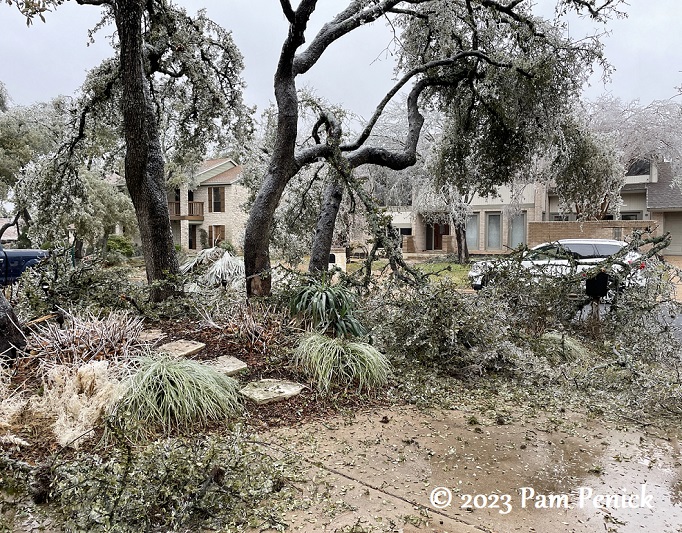
It wasn’t all that cold — a degree or two below freezing — but even so, more than a half-inch of ice encrusted Austin’s trees. Live oaks hold their leaves all winter. Weighed down with ice, and stressed from extreme weather over the last few years, many of them couldn’t bear the strain. For two days and a night we winced to hear trees cracking, limbs snapping, and crashing thuds all around our house.
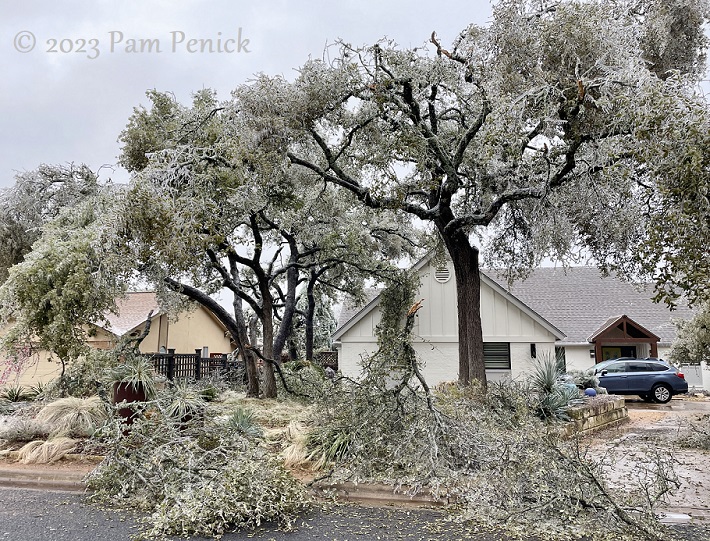
Trees across the city also fell onto power lines, sending homes and businesses into days of darkness and cold. On our block, 6 days crept by before power was restored. After seeing the damage across town, I’m certain that Austin Energy’s crews and those borrowed from other cities were working as fast and as hard as they could, in dangerous conditions, to get power lines back up.
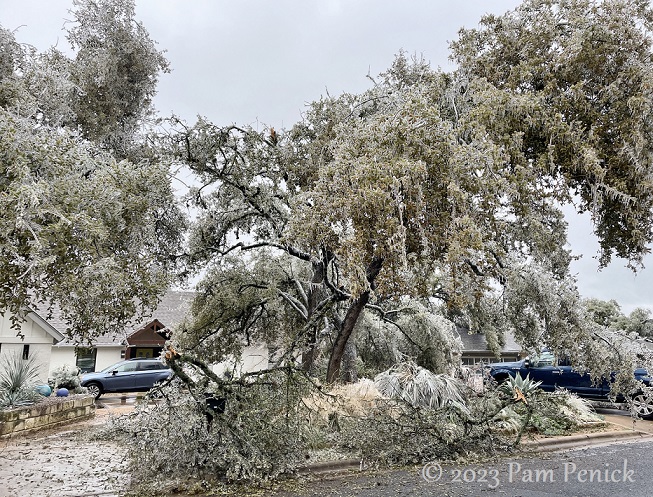
We are lucky that our house and vehicles, deck and patio were largely untouched. A few fencing panels sustained damage, and we lost an A/C unit.
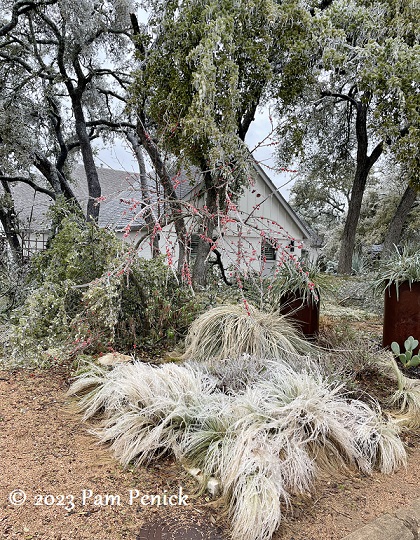
About 50% of my understory trees, like this red-berried possumhaw, were crushed by falling limbs. But the agaves, big yuccas, bottle tree, and stucco walls survived. It was bad but could have been a whole lot worse.
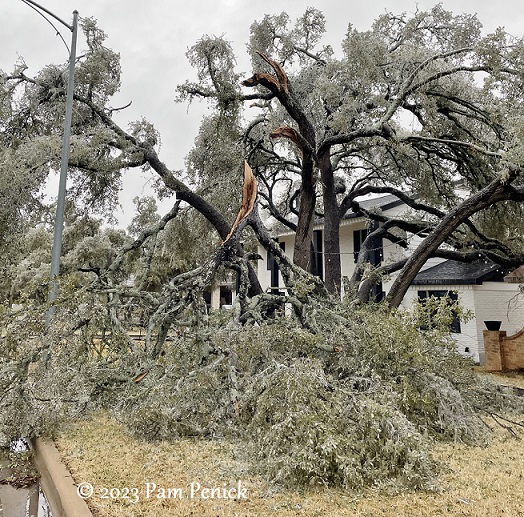
Along our street, broken live oaks looked as if a small tornado had whirled through.
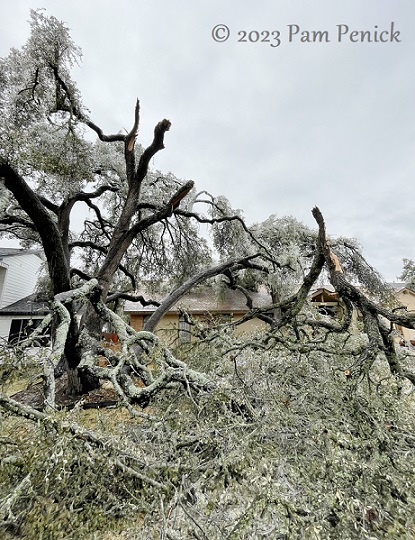
Trees in my neighbor’s yard
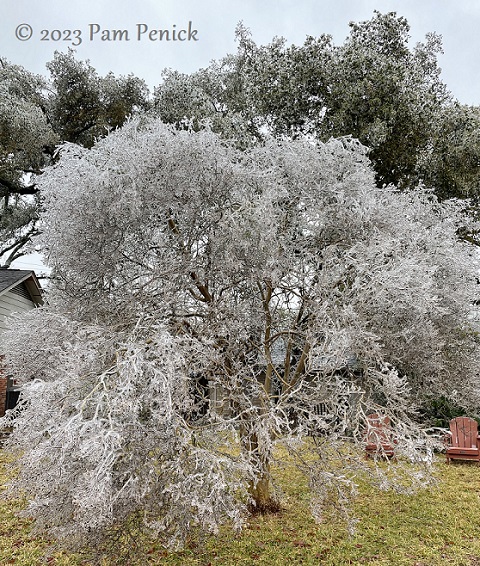
Crape myrtles held up well overall. This one at a neighbor’s house was lovely all frosted with ice.
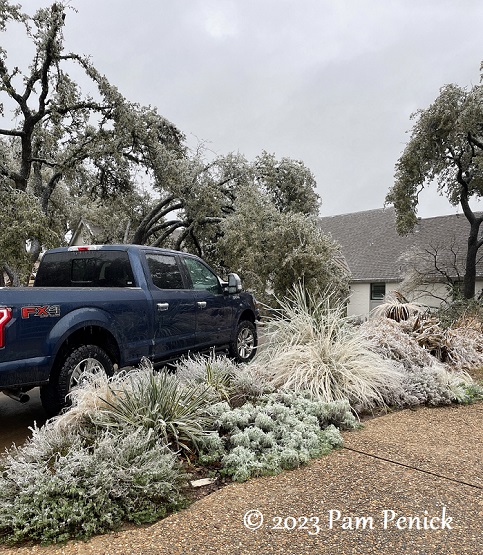
While sad about our trees, I found moments to appreciate, like my driveway border, looking pretty even in late winter and under a layer of ice. No trees here to crush anything! Hooray for ornamental grasses, yuccas, purple skullcap, and ‘Powis Castle’ artemisia.
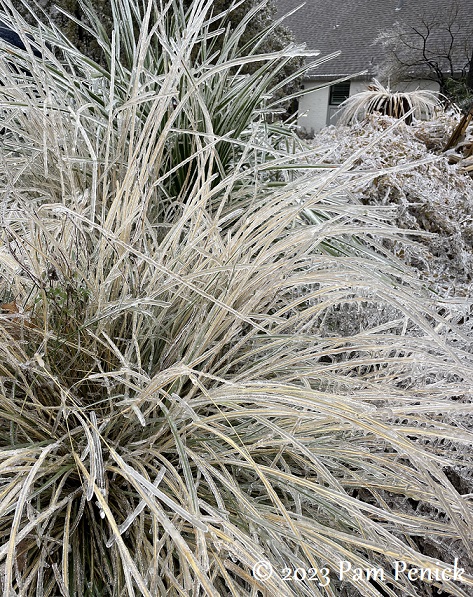
Pine muhly (Muhlenbergia dubia), one of my tough-as-nails favorites, coated in ice
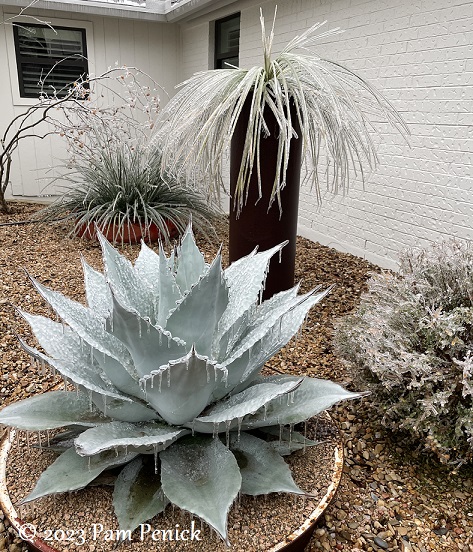
Whale’s tongue agaves (Agave ovatifolia) sailed through the ice storm, as did red yuccas (Hesperaloe parviflora). The Anacacho orchid tree in back bent to the ground under the ice but has already straightened up. The toothless sotol in the steel pipe may be a goner though; it didn’t like December’s Arctic freeze either.
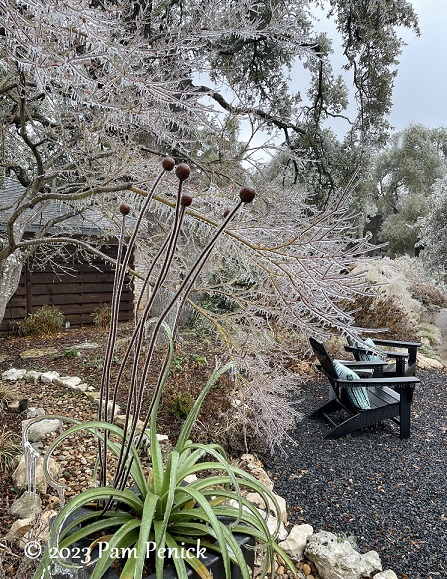
Squid agave (Agave bracteosa) can easily handle low 30s temps and ice, even in a pot. The Japanese maple bent but did not break — and thankfully falling live oak limbs missed it.
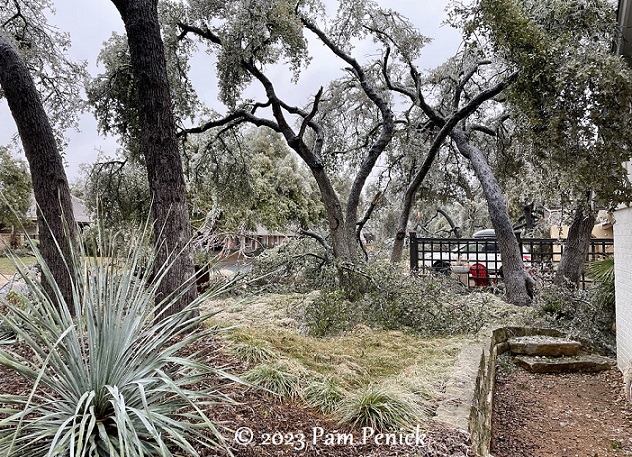
My husband spent the weekend sawing and hauling limbs and stacking them along the street. I did the same with smaller limbs on Monday. On Tuesday our tree guy arrived and spent the entire day removing dangerous broken limbs from the canopy as well as gigantic limbs on the ground that were too big for us to easily tackle.
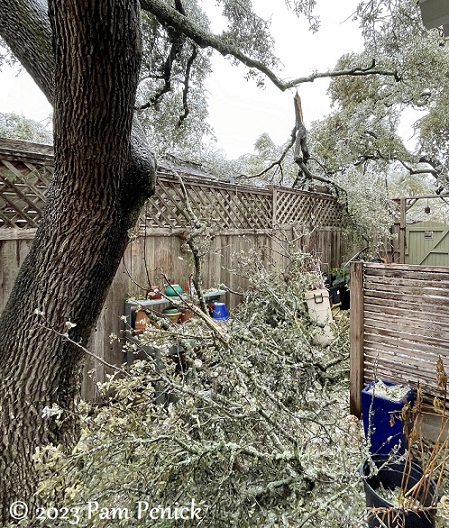
How things looked throughout our yard before all the cleanup
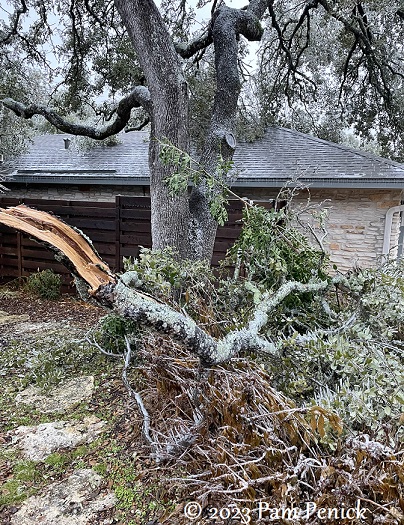
The Texas mountain laurel my daughter grew from seed — which had mostly recovered from Snowpocalypse damage — took a direct hit from a big live oak branch.
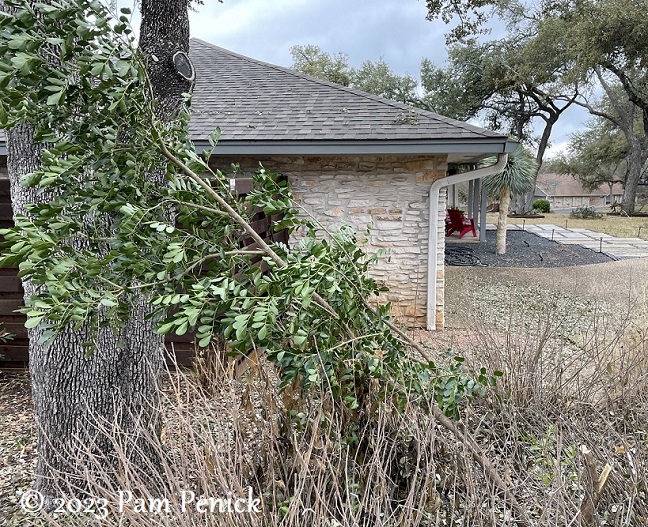
Half of it was snapped off, and the other side is now leaning at a 45-degree angle. I think it’ll live though. We’ll stake it to try to get it upright again.
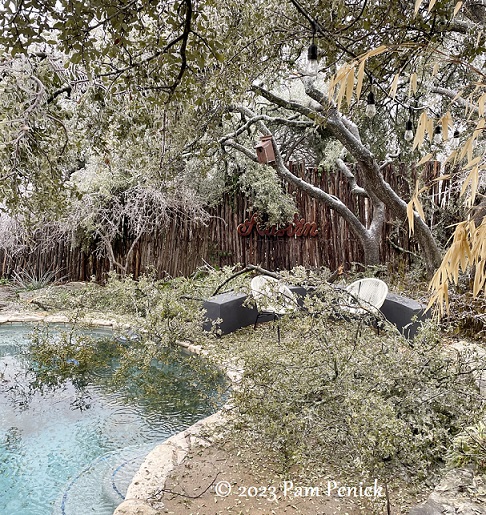
The owl box tree lost about half its canopy. One big branch landed in the pool. Another on the stucco wall. The chairs and wall were spared – yay!
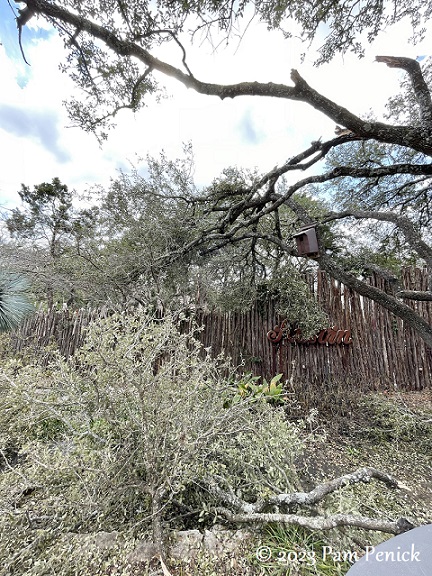
Another angle shows the extent of damage to the tree.
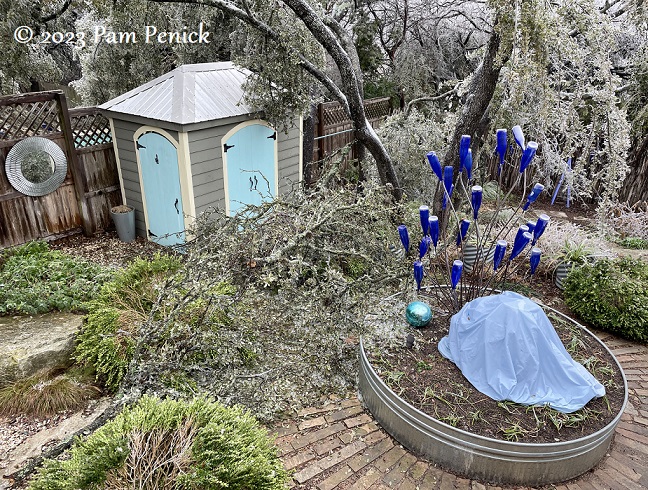
A big limb came down on the other side of the garden but missed the shed and bottle tree. Two of the boxwood balls sustained some broken branches, but at least they’re still standing.
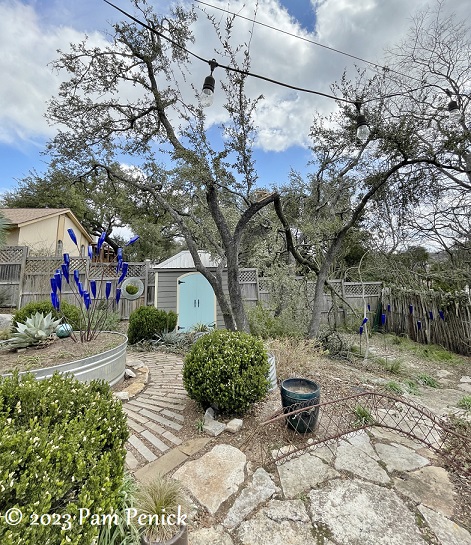
This cluster of live oaks, which were recovering from having their root zone buried long ago, lost significant branches. I hope they’ll be OK. A metal arbor (lying in the foreground) took a direct hit that broke it.

This space is going to be much sunnier and hotter this summer. But that means different plants to try. I’d been leaning toward planting sedge in my stock-tank planter. But now, with less shade, I’m considering silver ponyfoot after all.
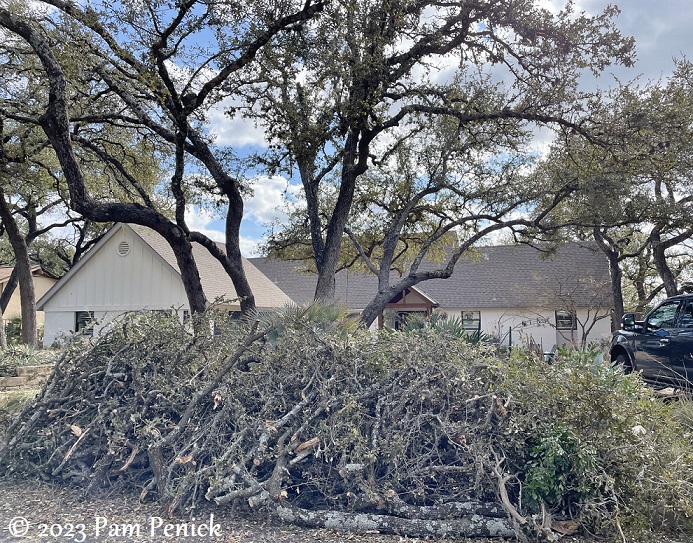
Meanwhile, until the city picks up our Arbormageddon pile or our tree guy can get to it, we’re enjoying our newly fortressed home. This 6-foot-tall pile of stacked limbs (does not include the full day of cuttings our tree guy hauled off) stretches all the way along our street frontage, from here along the island bed…
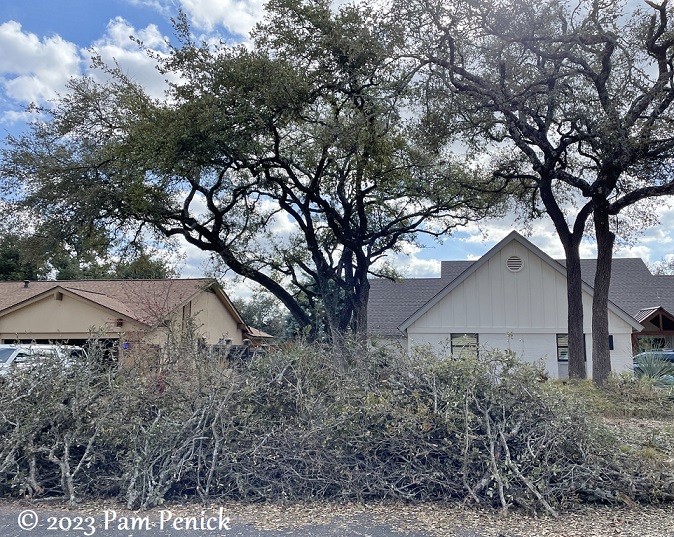
…to the property line on the other side of the driveway.
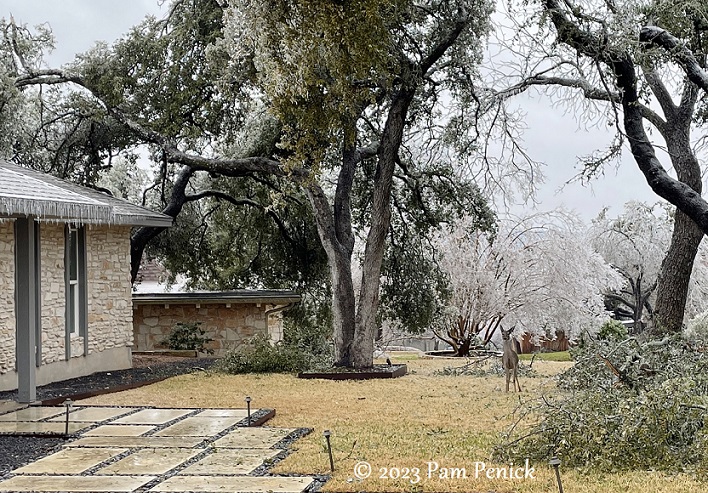
If only it could keep out the deer, it might be a worthy trade – hah!
Pruning damaged oaks? Do this to avoid spreading oak wilt, which kills trees
If you have ice-damaged oak trees, especially live oaks or red oaks, here’s what you need to know. The tree disease oak wilt is lethal to most live oaks and red oaks that get it, and it spreads easily from a sick tree to a healthy one. The fungus that causes oak wilt spreads in two ways: 1) underground through interconnected tree roots and 2) above ground via a beetle that’s attracted to tree sap (from cuts and wounds) and is most active from February through June in Central Texas.
We are currently in the do-not-prune months for live oaks to prevent the spread of oak wilt. Obviously, you need to cut dangerous hanging branches out of your trees right now so they don’t fall on you or passersby. Get this done as soon as possible, and make sure those cuts are immediately sealed with paint — right when the cut is made to prevent the beetle from getting into it.
But don’t prune all the ugly tears and amputated limbs on your oaks right now. The trees will have sealed off those wounds within the first few days of injury. Cutting those now just opens your trees to oak wilt exposure. Schedule non-emergency, aesthetic pruning in July or later. Late fall is best, when trees are no longer summer-stressed. Here in Central Texas, oak pruning should be done July through January, when the oak wilt beetle is less active. Also, remember to sanitize pruning tools before starting and between trees to prevent the oak wilt fungus from spreading from tree to tree.
Click here for more info about oak wilt and how to prevent its spread.
I welcome your comments. Please scroll to the end of this post to leave one. If you’re reading in an email, click here to visit Digging and find the comment box at the end of each post. And hey, did someone forward this email to you, and you want to subscribe? Click here to get Digging delivered directly to your inbox!
__________________________
Digging Deeper
Come learn about garden design from the experts at Garden Spark! I organize in-person talks by inspiring designers, landscape architects, and authors a few times a year in Austin. These are limited-attendance events that sell out quickly, so join the Garden Spark email list to be notified in advance. Simply click this link and ask to be added. You can find this year’s speaker lineup here.
Make plans to attend the Budding Out Plant Sale & Festival on March 18 at the John Fairey Garden in Hempstead, TX. Rare and distinctive plants will be offered, as well as art, ceramics, jewelry, food, drink, music, and other entertainment for the whole family. Members have early access and get in free. Non-member admission is $5. Children 12 and under are free.
Experience the Surreal Garden at Zilker Botanical Garden, an enchanting neon-art display throughout the gardens, with food and drink, music and dancing, surreal performers, and interactive art sculptures. Surreal costumes encouraged! 25% of event proceeds benefit the Zilker Botanical Garden Conservancy. Runs April 6 (VIP Night), April 7-8, and April 13-15, from 6:30 pm to 11 pm.
All material © 2023 by Pam Penick for Digging. Unauthorized reproduction prohibited.
The post Arbormageddon ice storm smites Austin’s trees appeared first on Digging.




